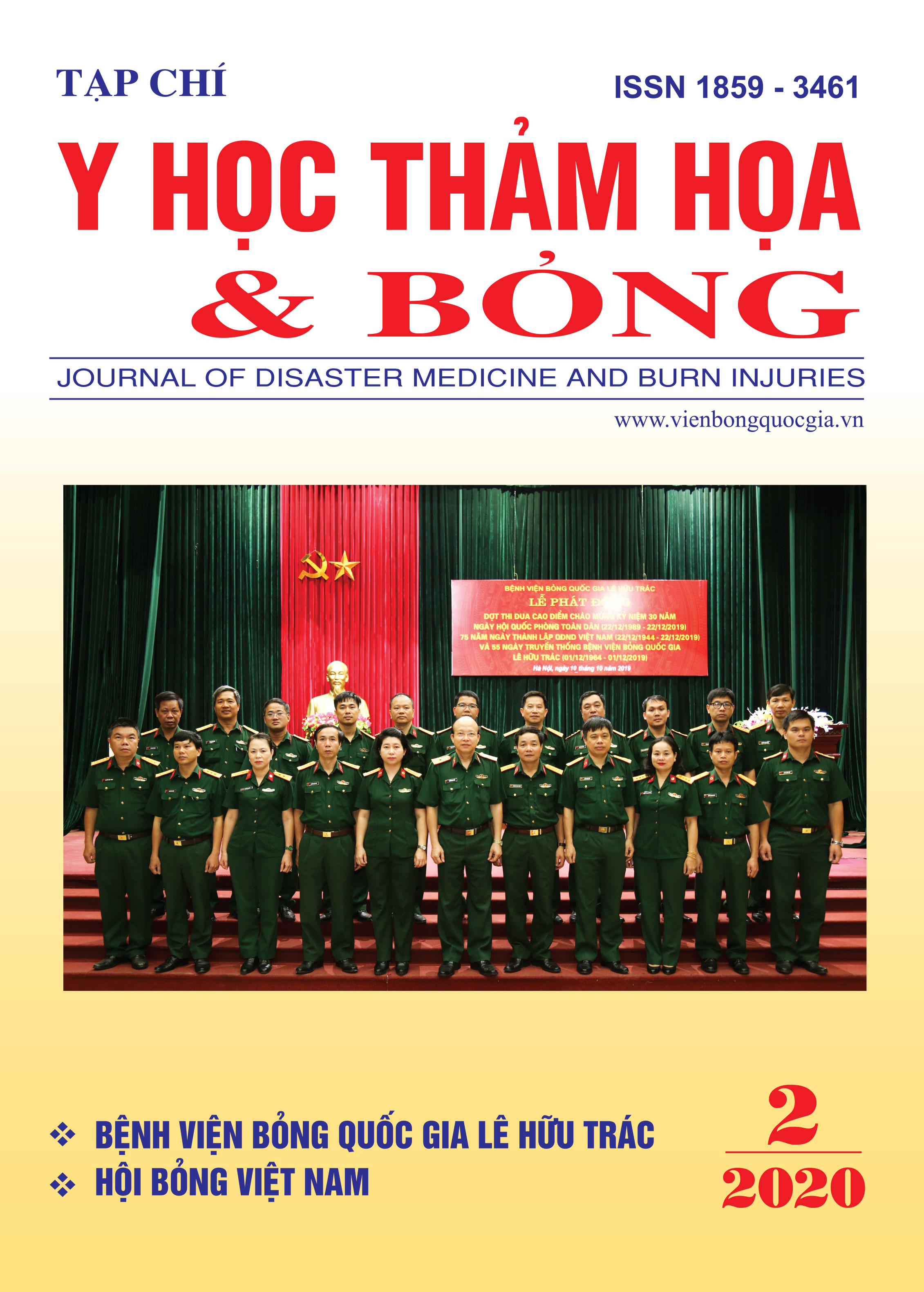Assessing the effect of 1.75% Cerium Nitrate solution on retard healing burns
Main Article Content
Abstract
Aims: The study aimed to assess the anti-inflammatory, bacteriostatic and safety effects of Ceri Nitrate 1.75% solution produced by Le Huu Trac National Burn Hospital for spot treatment of slow-healing burn wound.
Subjects and methods: Patients having long-healing burns treated at the Department of Rehabilitation at the hospital; assessing on clinical, subclinical, and microbiological criteria, comparing the therapeutic effect of cerium nitrate solution with betadine solution.
The results showed that in the experimented area, inflammation and exudation were significantly reduced compared to that of the control. The number of bacteria on the surface of the wound after 1 week of treatment decreased in both. The duration of treatment is significantly shortened. There were no local or systemic side effects, and no alterations in hematological and biochemical indicators were observed.
Conclusion: Cerium Nitrate solution is safe for spot treatment, has anti-inflammatory, antibacterial effects, and facilitates wound healing.
Article Details
Keywords
Cerium nitrate, slow-healing burns
References
2. Kremer B, Schoeneneberger G.A, Schoelmerich J et al. (1981). The present status of research in burn toxins. Intensive Care Med 7:77-87.
3. Deveci M, Eski M, Sengezer M, Kisa U (2000). Effects of cerium nitrate bathing and prompt burn wound excision on IL-6 and TNF-α levels in burned rats. Burns, Volume 26, Issue 1, Pages 41-45, February.
4. Eski M, Firat Ozer, Cemal Firat, Doğan Alhan, Nuri Arslan, Tolga Senturk (2012). Cerium nitrate treatment prevents progressive tissue necrosis in the zone of stasis following the burn, Burns, Volume 38, Issue 2, Pages 283-289, March.
5. Wolf SE, Arnoldo BD (2013). The year in burns 2012. Burns, 39 (2013), 1501-1513.
6. National Pressure Ulcer Advisory Panel (2016), NPUAP Pressure Injury Stages, http://www.npuap.org/
7. George Han and Roger Ceilley (2017). “Chronic Wound Healing: A Review of Current Management and Treatments”. Adv Ther. 2017; 34(3): 599-610.
8. Garner JP, Heppell PS (2005). Cerium nitrate in the management of burns Burns. Aug; 31(5):539-47.
9. Heruzo C.R, Garcia T.V, Rey-Calero J, Vizcaino M.J (1992), “Evaluation of the penetration strength, bactericidal efficacy and spectrum of action of several antibacterial creams against microorganisms in a burn centre”. Burns 18:39-44.
10. Azevedo MM, Cobrado L, Silva Dias A, Ramalho P, Pina-Vaz C and Rodrigues AG (2013); Antibiofilm Effect of Cerium Nitrate against Bacteria and Yeast; SOJ Microbiology & Infectious Diseases, Dec. 27, 2013.
11. Silva-Dias A, Miranda IM, Branco J (2015). In vitro antifungal activity and in vivo antibiofilm activity of cerium nitrate against Candida species. J Antimicrob Chemother. 2015; 70:1083-1093.
12. Dadalti P, Lupi O, Cruz E (2007). Silver sulphadiazine and cerium nitrate on chronic leg ulcers. J Am Aca Dermatol 56(2):208-210.
13. Abdalla S (2003). Silver sulphadiazine and cerium nitrate in venous ulcers: two case reports. A Bras Dermatol 78(2):227-33.
14. Evans CH (1983), “Interesting and useful biochemical properties of lanthanides”. Trends Biochem Sci. 1983;445-449.
15. Scheidegger D, Sparkes B.G, Luscher N et al. (1992). Survival in major burn injuries treated by one bathing in cerium nitrate. Burns 18(4):296-300.


